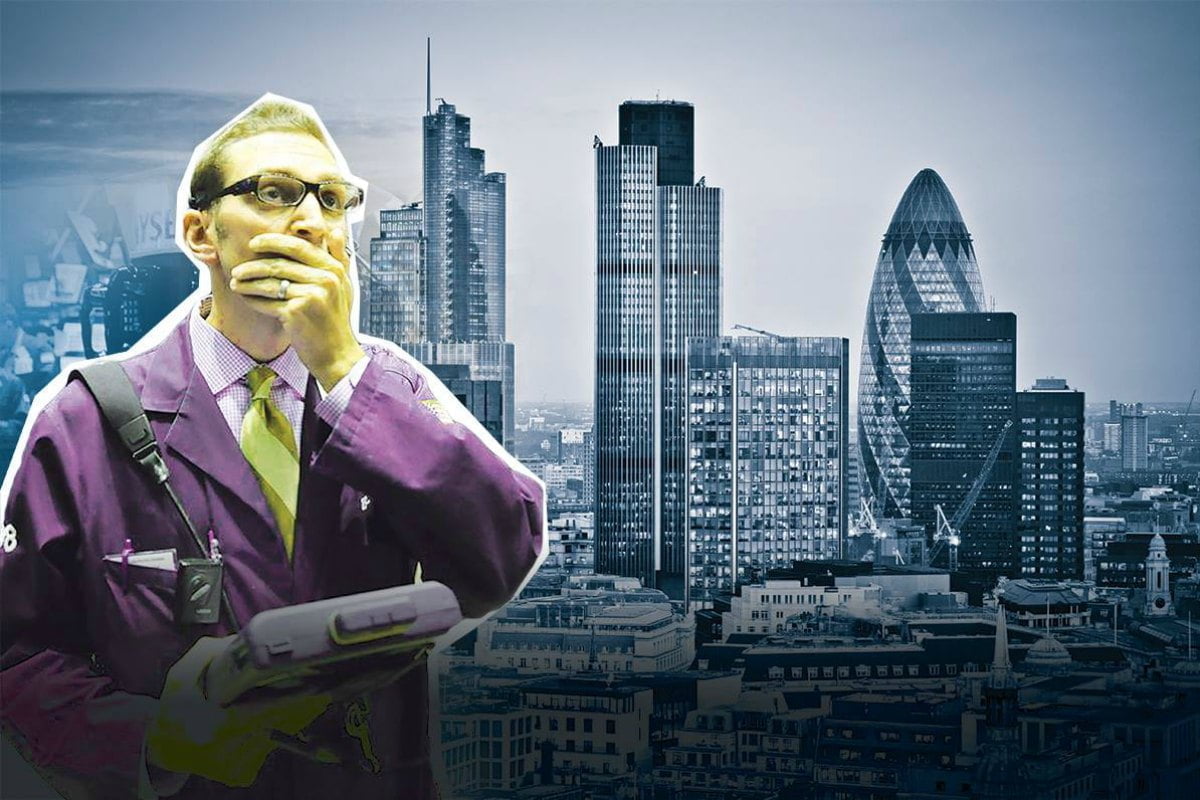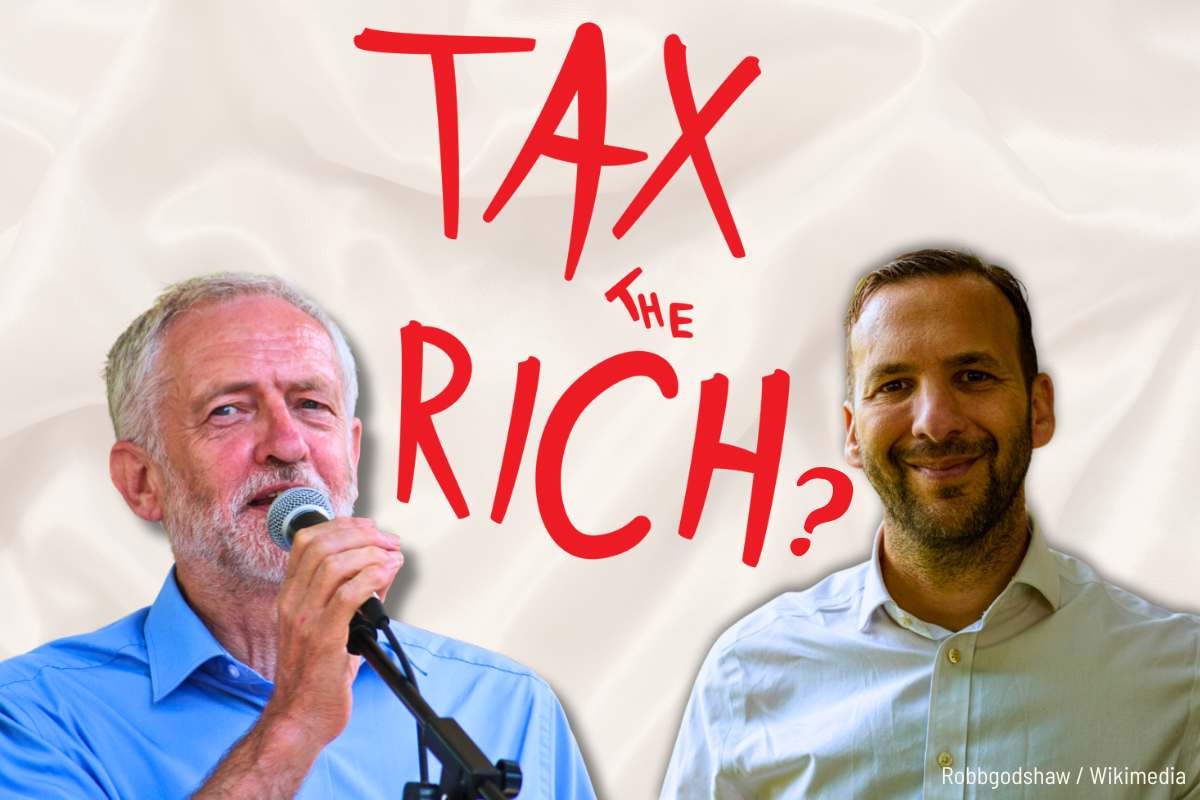One decade on from the financial crisis, Niklas Albin Svensson examines the precarious state of the world economy today. Another deep slump is being prepared.
The last two months have seen renewed worries about the economy. It was meant to be a period of optimism, with plenty of positive figures on unemployment, wage growth and so on. Yet in spite of the figures, the markets are jittery and the bourgeois is gradually realising that none of the problems that caused the crisis in 2008 have been resolved. If anything, they have become even worse.
2008 crisis
The 2008 crisis was originally called ‘the credit crunch’, and there was a certain logic to that. The economy had amassed an unprecedented level of debt. Suddenly investors panicked as a large number of ‘subprime’ mortgages defaulted in the US. The banks stopped lending to each other. No one knew which banks were exposed to these mortgages, or exposed to a bank that, in turn, was exposed to these mortgages. Credit froze and the state stepped in to guarantee and bailout the banking system.
This was the product of a whole period of expansion of credit. After World War II, world total debt (of household, companies and governments) was relatively high after all the debts incurred by governments during the war. In 1950, it was still around 140 percent of economic output, but by the 1960s, it was 110 percent and by the 1970s, it had fallen to 100 percent. The 1980s saw a sharp turn around, however. In 1990, debt had reached 130 percent of output again, in 2000, 180 percent and in 2007, just before the crisis, it reached 280 percent, or approximately 3 times world economic output.[1] That means for every dollar spent, three are borrowed.
The wiz-kids of Wall Street and the City of London were over the moon with their financial ingenuity, enabling capitalism to expand far beyond the limits of the market, the ability of workers to buy back the products that they had themselves produced. ‘Subprime’ mortgages were themselves a euphemism for mortgages that would never be paid. The banks gambled on being able to sell the house on at a higher price once the mortgage had defaulted. Governments in the 1990s and early 2000s removed any restrictions on such irresponsible conduct by banks. Central banks also helped out by lowering interest rates. Particularly important was the crucial moment that followed the bursting of the dotcom bubble in 2001. The Federal Reserve lowered its rates from 5 percent to 1.25 percent and thereby re-inflated the credit markets. From a capitalist point of view such a policy was completely irresponsible, but the ruling class feared the social and political consequences of a prolonged economic crisis and chose to postpone their problems.
Martin Wolf, in a recent article, hinted at this:
“Yet those who argue that it would have been better for central banks to have left the economy in recession than undertake aggressive monetary policies are utterly mistaken. It is immoral and ultimately impossible to sacrifice the welfare of the bulk of the people in order to placate the gods of the financial markets.”[2]
This policy was quite different to that of the 1930s. When the Wall Street Crash happened in 1929, total debts in the US were around 180 percent of GDP, in the following 4 years they rose dramatically to 260 percent (they reached 350 percent in 2007), as a result of the crisis. However, by the late 1930s, it was back down to around 180 percent. This was achieved through bank collapses, factory closures, mass unemployment and starvation. The less-profitable industries and banks went to the wall and were replaced by ones more modern and efficient. It was a tremendously tumultuous social period in US and world history, where the ruling class forced the working class to pay for the crisis. This is what Schumpeter euphemistically referred to as “creative destruction”. Even this failed to bring the world economy out of crisis. The destruction of continental Europe and Japan in World War II was needed to prepare the way for the boom of the 1950s and 1960s.
The bourgeois today have been desperately trying to avoid precisely such calamitous events. They are worried about opening up a revolutionary period like that of the 1930s.
Re-inflating the bubble
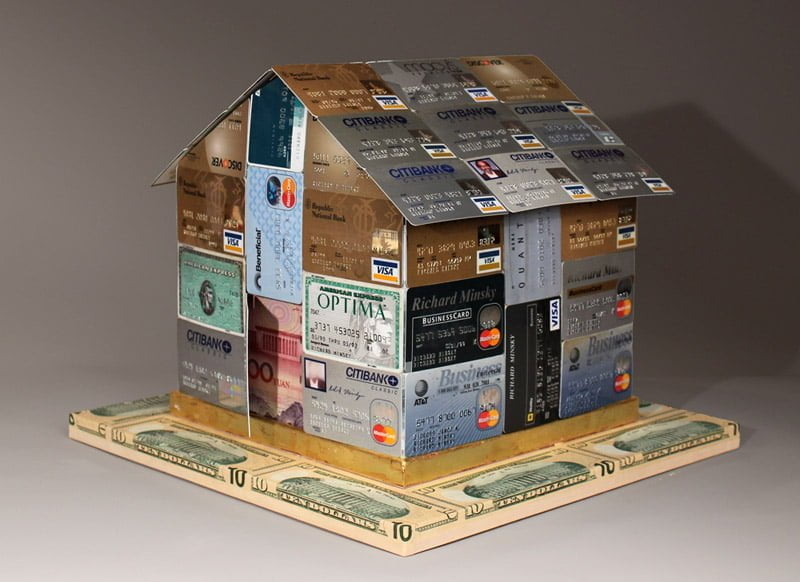 Instead of squeezing the credit out of the system, the bourgeois have been trying to re-inflate the bubble. At the outset of the crisis, rather than letting the banks go to the wall, they only let a couple do so, effectively putting up the state as a guarantor of all the debts that the banks had incurred.
Instead of squeezing the credit out of the system, the bourgeois have been trying to re-inflate the bubble. At the outset of the crisis, rather than letting the banks go to the wall, they only let a couple do so, effectively putting up the state as a guarantor of all the debts that the banks had incurred.
Bailouts were combined with an ultra-loose monetary policy, where the central banks created billions in new money (‘quantitative easing’) and lent it to banks, big corporations and the government. At the same time, central banks lowered interest rates to 0.25-0.5 percent (practically zero) and some countries, like Japan and Sweden, even set negative rates of interest (paying banks to borrow). The Federal Reserve assets grew from $900bn in 2008 (6 percent of GDP) to $4.4tn in 2017 (24 percent of GDP). The European Central bank assets grew from €1.1tn in 2006 (12 percent of GDP) to €4.5tn in 2017 (41 percent of GDP). The economists talked about being in ‘uncharted waters’, and they were correct.
Normally speaking, creating such a huge amount of money ought to have produced inflation on a massive scale, but it didn’t. Austerity and wage cuts reduced demand for products and services, at the same time as big corporations were attempting to reduce excess capacity in factories worldwide. Banks were trying to shore up their balance sheets and cut their lending to consumers and business. Big corporations didn’t want to invest because they already had production capacity far beyond what the market could swallow.
Governments and central banks were trying to re-inflate the credit bubble, but they only managed to prevent a deep depression, once again putting off the evil day. Much of the credit that was created ended up in an orgy of speculation. Stock markets were booming, reaching ever-higher records. The New York Dow Jones Industrial Average index rose from 14,000 in October 2007 to 26,600 on 26 January this year. The London Financial Times Stock Exchange 100 (FTSE 100) rose from 6,700 to 7,700. The Tokyo Nikkei index followed the same pattern of a peak in 2007 at 21,700 bottoming out in 2009, followed by an increase and a new high in January this year at 23,800. Cryptocurrencies (bitcoins) have risen explosively as well as works of art. In November, a painting supposedly by Leonardo da Vinci fetched a record $400m at an auction, in spite of its doubtful authenticity. Finance capital, rather than engaging in productive investment in the economy, was desperately looking for alternative sources of quick profit.
Large corporations have accumulated hundreds of billions of dollars in cash for which they are struggling to find productive investments. US non-financial companies are sitting on a $1.9tn, of which Apple, Microsoft, Alphabet (Google), Cisco and Oracle hold $679bn in total.[3] Warren Buffett’s Berkshire Hathaway are sitting on $116bn, thanks in a large part to Trump’s tax giveaway this autumn. Record corporate profits, as well as cheap credit have led to a new bout of mergers and acquisitions. At the moment, computer chip-maker Broadcom is attempting a hostile takeover of Qualcomm that makes 42 percent of smartphone processors. The deal they are offering is a staggering $117bn – the biggest technology deal ever. Other deals in the making include a $30bn bidding war for UK broadcaster Sky. In fact, Buffett complained in his annual letter to shareholders about the pricing of companies, saying he couldn’t find any with “a sensible purchase price” because prices had been driven so high.
Real estate bubbles have also sprung up in multiple economies. Since 2005, housing prices have risen by 108 percent in Australia and China, 50 percent in the UK and 43 percent in Canada.[4] In New York and other important US cities, prices aren’t up on 2008, but have recovered to their 2008 level. The very high cost of housing means also plenty of households with large mortgages that they can only repay on the basis of historically low interest rates. Should central banks attempt to restrict credit by raising interest rates or destroying some of the money they created at the height of the crisis, mortgage defaults could become endemic.
Nothing solved
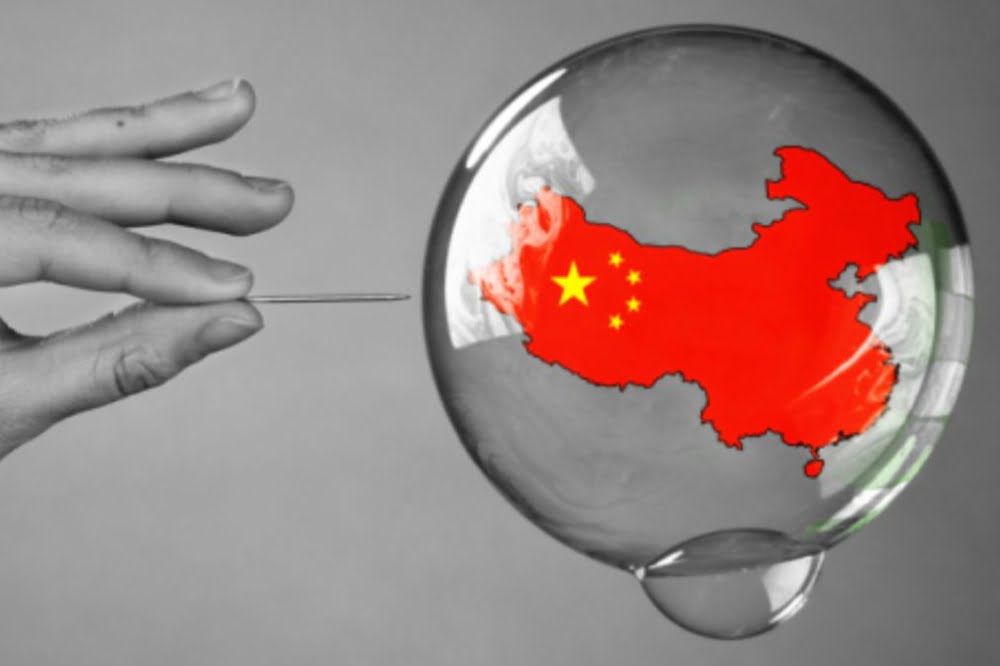 The more astute bourgeois commentators have realised that they have failed to solve any of the problems that caused the crisis in the first place:
The more astute bourgeois commentators have realised that they have failed to solve any of the problems that caused the crisis in the first place:
“After the 2008-09 financial crisis, the hope was that a combination of economic recovery, inflation and austerity would shrink the debt mountain. This, though, was too optimistic. Growth has been below par, inflation subdued and austerity self-defeating. While governments backslide on fiscal and industrial reform, the very toxin that sparked the crisis is relied on to reboot economies in the Americas and Europe.”[5]
For a whole period, the economy stagnated. In 2012 the small recovery was dubbed ‘The Worst Economic Recovery in History’ in the Wall Street Journal. It took the European Union seven years to recover to its 2008 output, although the US and Japan managed it in three and five, respectively.
Still today the state is backing 75 percent of US mortgages,[6] and Britain and Germany have several hundred billion dollars invested in its banking industry. The worst affected, Greece and Ireland, still have been unable to recover bailout money: the equivalent of 25 percent of their GDP.[7] Inflation remained stubbornly low, in spite of extremely cheap credit. Only in the past year has there been a slight pick-up in inflation to the point where the Federal Reserve dared to raise interest rates above 1 percent. The ECB and the Bank of Japan still haven’t discontinued their quantitative easing programmes, and their interest rates remain around zero.
In the advanced G20 economies, debt has remained high, in spite of all the austerity. Total debt reached 234 percent of GDP before the crisis, and is now at 263 percent.[8] So, although the banks and households in some countries are not so indebted, companies and governments are all the more indebted. Therefore, even though the last period has managed to produce a little bit of growth, it hasn’t helped the levels of debt.
One country that weathered the crisis better than most was China. The Chinese economy has continued to grow throughout the crisis. However, it has only been able to do so by accumulating masses of debt. Figures for China are not the most reliable, but it is estimated that total debt had reached 255 percent of GDP at the end of 2016. This is almost twice the 133 percent it was at the end of 2008.[9] This means that for every extra dollar in economic output, China is adding two dollars to its debt. Just like in the advanced economies in the lead up to 2008, China has been fuelling its boom with huge amounts of credit. It also affects almost all sectors of the economy: private companies, state-owned companies, households and local government.
Among the least-developed economies in the world, China is not the only one where debt has been increasing, but because of the size of the Chinese economy it has a decisive impact. It has meant that global debt has reached a new high at $233tn or 300 percent of economic output, up from 280 percent in 2008. Some years ago, there was talk of rebalancing the world economy, with particular emphasis on increasing Chinese imports. This has clearly been happening, but in a completely unsustainable way. China has gone from being a source of stability in the world economy to being one of the weak links.
Another aspect of this is the so-called zombie companies – companies that are unable to make a profit.[10] The Bank of International Settlement point out that the percentage of zombie companies had five-folded since 1987, and that zombies were twice as likely to remain zombies than in the past. Between 2008 and 2014, the percentage increased from seven percent to just over ten percent,[11] but they represent a much larger section of the labour market and total capital stock. The low interest rates are able to keep these companies afloat even if they are not making money. If a section of these companies went bankrupt, it could have potentially calamitous effect on the economy. It wouldn’t just impact their creditors (banks etc) and suppliers, but also threaten a large section of workers with unemployment.
The OECD produced a report in December called ‘confronting the zombies’ in which they tried to suggest policies to mitigate against such collapses. In theory, unprofitable companies going to the wall is a good thing. In practice such ‘creative destruction’ is often very destructive, and not very creative. Every country has its own ‘rust belt’ in one form or another, where the destruction of industries has ruined communities and nothing has come in to replace them. In a period of capitalist crisis, this is going to be far worse, and the bourgeois are tacitly admitting that this is the case.
So, after 10 years of crisis the economic situation, far from getting better, has become worse. None of the contradictions have been resolved and all attempts to get out have only created new contradictions.
Political equilibrium
 At the time of Marx, economists referred to their subject as ‘political economy’. Like Marx, they at the very least attempted to study the interrelationship between the economy and society. However, the neoclassical economists preferred to treat economics as a system of purely mathematical considerations. Politics was merely an unwanted, incalculable factor that didn’t fit their models. Only Keynes attempted to grapple with the question in the turbulent 1920s and 30s. It is not a surprise that Keynes has become popular again among those that are attempting to rescue the capitalist system from itself.
At the time of Marx, economists referred to their subject as ‘political economy’. Like Marx, they at the very least attempted to study the interrelationship between the economy and society. However, the neoclassical economists preferred to treat economics as a system of purely mathematical considerations. Politics was merely an unwanted, incalculable factor that didn’t fit their models. Only Keynes attempted to grapple with the question in the turbulent 1920s and 30s. It is not a surprise that Keynes has become popular again among those that are attempting to rescue the capitalist system from itself.
The reality is that the attempts to restore the economic equilibrium have upset the political equilibrium. Austerity, attacks on working conditions, massive profits and bank bailouts have all put politics at the forefront of economic ‘risk’. The ruling class has lost its ability to dictate the line to the political establishment. Perhaps most obviously this is the case with Brexit and Trump, where the ruling class is desperately attempting to rein in its own representatives.
The anger and frustration that have built up over the past decade have expressed themselves in protest votes against the status quo, against the establishment. Politics is becoming increasingly polarised between a protectionist, anti-immigrant right (the Conservative Party, Trump) and a radicalised left (Corbyn, Sanders). Neither option is particularly attractive to the ruling class.
In a recent CNN documentary called Why Trump Won, the Chairman of the Democratic Party of Mahoney County put it bluntly: “all they heard was just jobs, jobs, jobs, and he’s going to bring back our jobs”. The clever pundits will point to figures about record low unemployment and miss the point. The question is not having a job, but what kind of job, and on what terms. In the past the people of the rust belt and the North of England would have had reasonably well paid, skilled blue-collar jobs. These days they are asked to work in call centres, fast food outlets and Amazon warehouses on minimum wage.
Trump blames free trade for this situation, arguing that the US has signed too many trade deals that do not benefit ‘America’. Instead he wants to put ‘America First’. The truth is that the trade deals were signed in the interest of the US capitalists, who have made tons of money out of it, Trump included. Now Trump is claiming he’s going to “bring back jobs”. The only way to do that is at the expense of other countries: forcing factories to close in Mexico and Europe in order to supposedly open up new ones in the US. This is not going to happen, or if it does happen, it’s going to be by importing the working conditions of Mexico and the fast food industry into US manufacturing.
From the standpoint of the bourgeois, such a policy is extremely dangerous. A trade war between Europe and the US or China and the US would have disastrous consequences for the world economy, and that, in effect, is what Trump is threatening. On 1 March he took another step in that direction, following up his washing machine and solar panel tariffs with steel and aluminium. The stock exchanges took a nosedive. The EU immediately responded threatening retaliatory measures, to which Trump responded with threats of even more tariffs against the EU. Trump even wrote a tweet defending the policy:
“When a country (USA) is losing many billions of dollars on trade with virtually every country it does business with, trade wars are good, and easy to win. Example, when we are down $100 billion with a certain country and they get cute, don’t trade anymore-we win big. It’s easy!”
The bourgeois see this as utterly reckless. The world economy is completely integrated, and trade wars would have an extremely disruptive effect on the US as on other economies. It would not be ‘easy’ or a ‘big win’ at all. The bourgeois is seriously worried about the latest developments. Members of Trump’s cabinet opposed it, and a section of the Republican Party have announced their willingness to bring in legislation to put a halt to Trump’s tariffs.
Other governments have taken a very dim view. On the question of a renegotiated NAFTA, Justin Trudeau has even gone so far as to say that “no deal might very well be better for Canada than a bad deal”. European Commission President Juncker said on 2 March:
“So now we will also impose import tariffs. This is basically a stupid process, the fact that we have to do this. But we have to do it. We will now impose tariffs on motorcycles, Harley Davidson, on blue jeans, Levis, on Bourbon. We can also do stupid. We also have to be this stupid.”
Trump in this is to some extent only the messenger, which is precisely why they are so worried. If it was just a question of Trump, he could be dealt with. The problem is that the whole logic of the economic crisis is pushing nations against each other, attempting to offload their social and political problems on others. Already under Obama, protectionist measures were on the increase and Brexit follows the same trend.
It is not just in questions of trade where the ruling class is losing its grip. The recent tax changes in the US were not really what the US ruling class was looking for. They represent a massive tax cut for the people who have already done best out of the crisis. Record corporate profits are now going to be compounded with additional tax breaks. The $1.5tn tax cut also added to the existing deficit, a deficit that no one seems to be prepared to deal with.
Republican congressmen and senators have gone from being deeply concerned with the deficit to record-breaking budget deficits. The latest budget agreement with the Democrats added another $300bn to the deficit. Now the deficit is projected to be $1.2tn.
Return to volatility
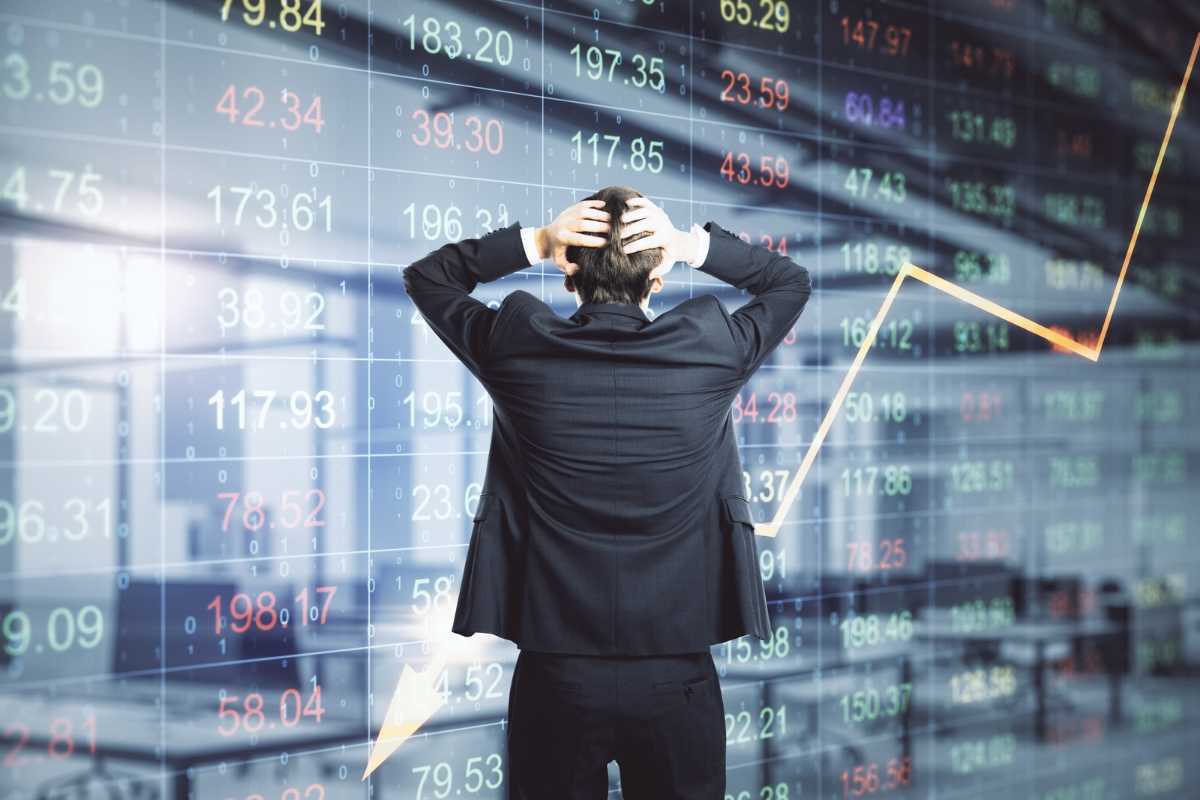 It is in this context that markets were spooked in early February. The US economic data, paradoxically, was too good. Inflation was picking up, certain measures of wages were rising and so on. The jolt of the stock markets reflected a fear of the end of cheap money.
It is in this context that markets were spooked in early February. The US economic data, paradoxically, was too good. Inflation was picking up, certain measures of wages were rising and so on. The jolt of the stock markets reflected a fear of the end of cheap money.
A number of articles welcomed the development, basically arguing that the markets had been too calm, too optimistic, and it worried commentators. If there is one running theme through October to January, it is that all the commentators are worried about optimism.
At the World Economic Forum, there was plenty of pessimism in spite of figures that superficially spoke of recovery: “The biggest concern I have is that most people think there’s no problem of a likely recession this year or early next year,’’ said the co-founder of Carlyle Group. “Generally, when people are happy and confident, something wrong happens.’’ Jes Stanley, the head of Barclays Bank declared that “I do feel it’s a little bit like 2006, when we were all talking whether we’ve solved the riddle of economic crises,” but “we’ve never avoided the next financial crisis”.[12]
In the 2000s, Gordon Brown talked about the end to the ‘boom-bust cycles’. Now this kind of optimism has been replaced by the sombre realisation that not only did they fail to avoid the crisis of 2008, they cannot avoid another one in the short term.
Rising inflation would mean that the Federal Reserve would have to raise interest rates to keep inflation under control. This could threaten households and companies with bankruptcy. “We’ve got very little capacity in the capital markets to deal with a real move in interest rates,” Stanley explained. The head of M&G Investments, had the same concern: “If interest rates go up meaningfully over the next 12 months, there will be a bunch of people who have borrowed money who will not be able to pay it back,” she said. “Those people are out there, and the markets are not, in aggregate, pricing that.”[13]
No one really knows how high interest rates can go without bringing about another recession, but many fear that that rate may be a lot lower than what would be necessary to control inflation. This has led a lot of financial commentators to urge caution. They are generally more worried about recession than inflation, because of how fragile the present recovery is.
A new crisis being prepared
 No one knows when the next recession is going to come. If the present economic growth lasts until the end of 2019, it would be the longest period of uninterrupted growth in the US since 1945 (albeit a very weak one). On the surface, the figures look good, but they always look good before a crash. Those commentators that look a little bit below the surface are worried.
No one knows when the next recession is going to come. If the present economic growth lasts until the end of 2019, it would be the longest period of uninterrupted growth in the US since 1945 (albeit a very weak one). On the surface, the figures look good, but they always look good before a crash. Those commentators that look a little bit below the surface are worried.
The world economy has been kept afloat, not by investments, improving productivity and raising wages, but by yet again increasing levels of debt. All the measures that are meant to bring the economy out of recession: lowering interest rates, increasing state deficits and so on, have already been used up, particularly the monetary measures. When the next recession strikes, central banks and governments will have no means of getting out. They will no longer be able to postpone the inevitable. That’s why they’re desperately hoping that the recession will not come now.
It’s not just in economic terms either. Already the first ten years of this crisis have seen tremendous political upheaval where the ruling class has used up the political capital of the traditional parties, including the Social Democratic parties. Who are they to lean on for support to carry out the next round of austerity and keep the fragile system of world trade in place? In fact, political questions are the ones that worry them the most at the moment – the risk that Trump, Brexit or some yet unseen political earthquake will shatter the fragile economic equilibrium.
Marxists do not welcome economic crises but we do tell the truth. In the end the question comes down to who pays? Who is to pay for the crisis? Who is to pay the debt? The bourgeoisie will attempt to make the working class pay by attacks on working conditions and living standards. This will prepare the way for even more violent conflict between the classes over the coming period.
1 Michael Roscoe, whythings.net
2 ‘A bit of fear is good for markets’, Martin Wolf, Financial Times, February 13, 2018
3 ‘Corporate America’s cash pile to balloon to $1.9tn in 2017 — Moody’s’, Mamta Badkar, Financial Times, November 20, 2017
4 ‘The long and winding road to economic recovery’, Claire Manibog and Stephen Foley, Financial Times, August 10, 2017.
5 ‘Global debt is the danger: beware the butterfly moment’, Pascal Blanque and Amin Rajan, Financial Times, January 4th
6 ‘The US government is still propping up its mortgage market’, Financial Times, August 18, 2017.
7 ‘Bailout costs will be a burden for years’, Financial Times, August 8, 2017
8 Figure 1.23, ‘Global Financial Stability Report October 2017’, IMF
9 Figure 60, ‘State of China’s economy’, November 2017, Macquarie Research
10 OECD definition is a company whose earnings before interest and taxes is less than its interest rate payments
11 ‘How do zombies actually die?’, Financial Times, January 18, 2018
12 ‘Davos Bank CEOs Are Worried Markets Are Complacent Like 2006’, Bloomberg, January 23, 2018
13 Ibid

